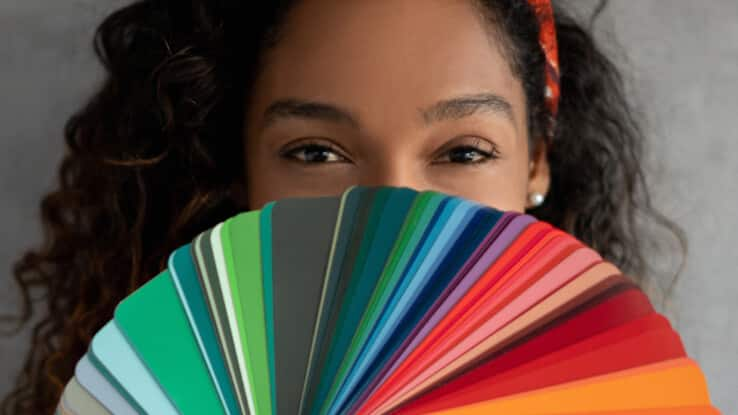
Language impacts speed of color perception, research reveals
What's the story
A recent study conducted by the Norwegian University of Science and Technology (NTNU) and the University of Oslo, has revealed a fascinating link between language and color perception. The research suggests that the language one speaks can significantly influence how quickly one differentiates between similar colors. This discovery was made through a series of tests involving 106 participants, who were native speakers of Lithuanian, Norwegian, or bilingual in both languages.
Test results
Faster color identification in specific languages
The study found that individuals who speak languages with unique words for different shades of a color, can identify those hues more quickly. This is compared to those whose languages use adjectives to describe color variations. The experiment involved timing participants as they differentiated between pairs of blue chips in varying shades, both in silence and while memorizing a series of digits.
Bilingual advantage
Bilingual individuals show faster color perception in Lithuanian
The results indicated that bilingual participants could distinguish between different shades of blue more quickly in Lithuanian than in Norwegian. This is because Lithuanian has two words for blue (zydra for light blue and melyna for dark blue), while Norwegian only has one - bla. Even when tasked with remembering numbers spoken in Lithuanian, these bilingual individuals maintained their speed advantage in color differentiation.
Linguistic impact
Language's dynamic influence on color perception
Mila Vulchanova, a linguist at NTNU, stated that the findings support the idea that the language we use can affect how we perceive colors. She further explained that this link is very dynamic and dependent on brain activation. Akvile Sinkeviciute, formerly of NTNU and now a computer scientist at Northeastern University London, echoed these sentiments by highlighting how significantly language can affect color perception in bilingual individuals.
Perception shaping
Study suggests language shapes our world perception
The study implies that language can shape our perception of the world, even down to basic color perception. This adds to our understanding of language and cognition, and how the way we speak can train the brain. "Our research and research done by others show that this is a two-way process," Vulchanova explains. "This means that language can activate and influence cognitive categories, and vice versa, that cognitive mechanisms and categories influence language."